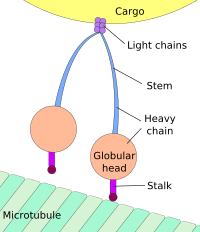
Photo from wikipedia
The identification of the key regulators of bile acid (BA) synthesis and transport within the enterohepatic circulation has revealed potential targets for pharmacological therapies of cholestatic liver diseases. Novel drug… Click to show full abstract
The identification of the key regulators of bile acid (BA) synthesis and transport within the enterohepatic circulation has revealed potential targets for pharmacological therapies of cholestatic liver diseases. Novel drug targets include the bile BA receptors, farnesoid X receptor and TGR5, the BA‐induced gut hormones, fibroblast growth factor 19 and glucagon‐like peptide 1, and the BA transport systems, apical sodium‐dependent bile acid transporter and Na+‐taurocholate cotransporting polypeptide, within the enterohepatic circulation. Moreover, BA derivatives undergoing cholehepatic shunting may allow improved targeting to the bile ducts. This review focuses on the pathophysiological basis, mechanisms of action, and clinical development of novel pharmacological strategies targeting BA transport and signaling in cholestatic liver diseases. (Hepatology 2017;65:1393‐1404).
Journal Title: Hepatology
Year Published: 2017
Link to full text (if available)
Share on Social Media: Sign Up to like & get
recommendations!